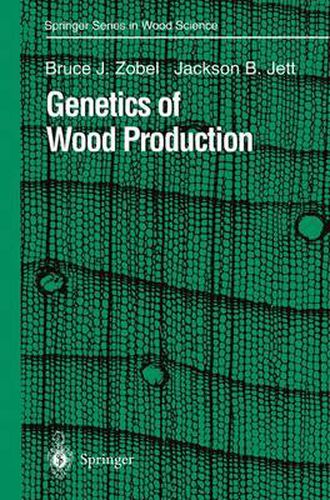Readings Newsletter
Become a Readings Member to make your shopping experience even easier.
Sign in or sign up for free!
You’re not far away from qualifying for FREE standard shipping within Australia
You’ve qualified for FREE standard shipping within Australia
The cart is loading…






This title is printed to order. This book may have been self-published. If so, we cannot guarantee the quality of the content. In the main most books will have gone through the editing process however some may not. We therefore suggest that you be aware of this before ordering this book. If in doubt check either the author or publisher’s details as we are unable to accept any returns unless they are faulty. Please contact us if you have any questions.
Over the past years, a great deal has been learned about variation in wood prop erties. Genetic control is a major source of variation in most wood properties. Wood is controlled genetically both directly in the developmental or internal pro cesses of wood formation and indirectly by the control of tree form and growth patterns. Emphasis in this book will be on the internal control of wood production by genetics although there will be two chapters dealing with the indirect genetic control of wood, which was covered in detail in the previous book by Zobel and van Buijtenen (1989). The literature on the genetics of wood is very variable, SO'lle quite superficial, on which little reliance can be placed, and some from well-designed and correctly executed research. When suitable, near the end of each chapter, there will be a summary with the authors’ interpretation of the most important information in the chapter. The literature on the genetics of wood can be quite controversial. This is to be expected, since both the environment and its interaction with the genotype of the tree can have a major effect on wood properties, especially when trees of similar genotypes are grown under widely divergent conditions. Adding to the confusion, studies frequently have been designed and analyzed quite differently, resulting in conflicting assessments of results.
$9.00 standard shipping within Australia
FREE standard shipping within Australia for orders over $100.00
Express & International shipping calculated at checkout
This title is printed to order. This book may have been self-published. If so, we cannot guarantee the quality of the content. In the main most books will have gone through the editing process however some may not. We therefore suggest that you be aware of this before ordering this book. If in doubt check either the author or publisher’s details as we are unable to accept any returns unless they are faulty. Please contact us if you have any questions.
Over the past years, a great deal has been learned about variation in wood prop erties. Genetic control is a major source of variation in most wood properties. Wood is controlled genetically both directly in the developmental or internal pro cesses of wood formation and indirectly by the control of tree form and growth patterns. Emphasis in this book will be on the internal control of wood production by genetics although there will be two chapters dealing with the indirect genetic control of wood, which was covered in detail in the previous book by Zobel and van Buijtenen (1989). The literature on the genetics of wood is very variable, SO'lle quite superficial, on which little reliance can be placed, and some from well-designed and correctly executed research. When suitable, near the end of each chapter, there will be a summary with the authors’ interpretation of the most important information in the chapter. The literature on the genetics of wood can be quite controversial. This is to be expected, since both the environment and its interaction with the genotype of the tree can have a major effect on wood properties, especially when trees of similar genotypes are grown under widely divergent conditions. Adding to the confusion, studies frequently have been designed and analyzed quite differently, resulting in conflicting assessments of results.